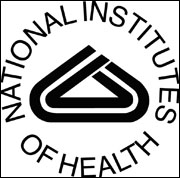Topic Shortcuts:
 | Invests more than $190 million into epigenomics. Goals in the Epigenetic program include:
|

 | CellCentric is a company based in Cambridge, UK that has had multiple discovery and development programs across a range of enzyme classes, including demethylases, methyltransferases and ubiquitin modulators.
|

 | Leading developer and provider of innovative technologies for
epigenetic-related products. The company has developed a comprehensive
portfolio of more than 400 proprietary products to provide complete and
systematic solutions for epigenetics-related research and drug
discovery.
|

 | The
first biopharmaceutical company focused on discovering and developing
novel drugs targeting selective regulators of epigenetic function.
|

 | Epizyme is a biopharmaceutical company that is creating innovative drugs that will provide revolutionary treatments for major diseases based on the profound discoveries emerging from the field of epigenetics.
|

 | Use HDAC inhibitors to test the therapeutic potential of tumor phenotype modification. Goal is to extend and improve the lives of cancer patients by developing and commercializing novel therapies.
|

 | Studies on how epigenetic mechanisms function in breast cancer.
According to published research, Dana-Farber has discovered that
epigenetic changes in non-cancerous breast cells could send signals to
genes in tumor cells to accelerate growth. (Citation-14) |

 | With $5 million, Johns Hopkins is the first university-based research center devoted to studying epigenetics, an effort that will set the stage for learning as much about our epigenetics as the Human Genome Project taught about the sequence of building blocks that make up our genes. (Citation-15) |
Epigenetic Products
Histone Deacetylase (HDAC) Inhibitors
HDAC inhibitors are emerging as a promising and new class of potential anticancer agents. The idea of HDAC inhibitors is to lessen the formation of HDAC enzymes present in cells. The drop in HDAC levels will allow acetylated nuclear histones to accumulate in both tumor and normal tissues. This, in turn, will lead to the transcriptional activation of certain genes, such as p53. The p53 gene is a tumor suppressor that plays a vital role in preventing cancer. Several HDAC inhibitors have already shown impressive antitumor activity in place with remarkably little toxicity in preclinical studies which are currently in phase I clinical trial. (Citation-7)
Entinostat Syndax Pharmaceuticals, Inc., was founded in 2005 to
extend and improve
the lives of cancer patients by developing and commercializing novel
therapies. This company uses HDAC Inhibitors in a product called
entinostat (SNDX-275). This lead compound has been given orally and has
a half life (amount of time it is active) of about 100 hours. This
product in preclinical studies has inhibited the growth of a range of
human tumors, including models of lung cancer, prostate cancer, breast
cancer, pancreatic cancer, renal cell cancer, and glioblastoma. (Citation-8)
|
 |
EpiScreen This company based in Berlin, Germany develops analytical products based on DNA Methylation. Epiontis aims to make Regenerative Medicine safer, and in turn, ensure patient cell therapies with safety. One product, named EpiScreen, identifies growth factors in cells using DNA Methylations as markers. Growth factors are important for the proliferation and differentiation of cells.(Citation-9)
|
 |
MethylGene MethylGene uses drugs that inhibit DNA Methylation. MethylGene founder Moshe Szyf, Ph.D., of McGill University, was among the first to propose that inhibiting methyltransferases might work as a cancer treatment.A product, MG98, is deep into multiple phase II clinical trials for a variety of cancers. Phase I results showed safety and evidence of efficacy. (Citation-5) |
 |